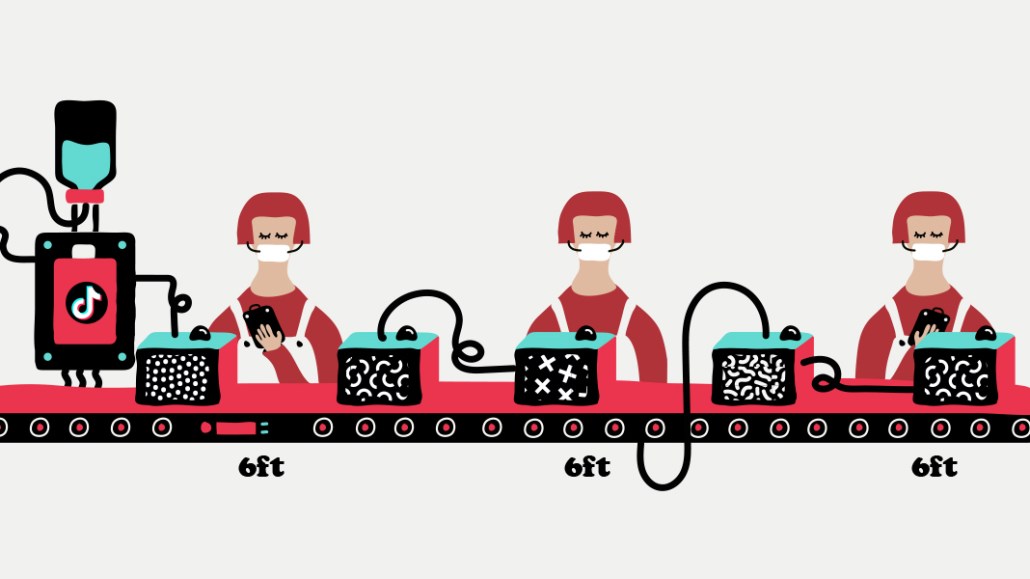Why a DTC jewelry company is placing its bets on organic growth via TikTok

The Clear Cut, a direct-to-consumer jewelry company, is making more organic TikTok content with influencers, including educational videos to boost brand awareness to capture more of Gen Z’s attention.
“We would like to put some more spend there. But we’ve just been having such phenomenal success organically. We have just been focused on that,” said Kyle Simon, co-founder and COO of The Clear Cut. He added that the TikTok growth has helped boost sales and brand awareness, but did not provide specific figures.
This year, The Clear Cut is spending less than 3% of revenue on paid media, he said, which has increased slightly as the brand added more channels to its media mix, including TikTok. The Clear Cut’s media mix is made up of paid search, Facebook and Instagram, and Pinterest; Simon did not provide further specifics around the brand’s media spend.
According to Pathmatics, The Clear Cut spent $15,300 on Facebook and Instagram so far this year, significantly down from the $31,000 spent on those channels in 2021.
The four-year-old, NYC-based startup isn’t the only one placing its bet on TikTok hoping for a viral moment driving brand awareness without a large spend. It’s seemingly a trend as industry experts say rising ad prices, slumping organic reach and shifting formats have pushed brands and advertisers to diversify their ad budgets, according to previous Digiday reporting.
“We’re very disciplined with spend because again, we’ve seen a lot of DTC businesses struggle. But we also haven’t raised a significant amount of capital,” Simon said. “So all this growth has been pretty much bootstrapped.”
TikTok content creation is done in-house, said Olivia Landau, co-founder and CEO of The Clear Cut.
Ad position: web_incontent_pos1
Over the last two years, TikTok has increasingly become a line item in media mixes and marketing strategies as the short-form video app continues to grow in popularity. As the creator economy swells, TikTok offers a level of creator ownership, via its creator tools, that Facebook and Instagram are catching up to, said Brandy Alexander, senior director of e-commerce strategy for Icon Commerce, a DTC commerce agency. “TikTok is always inventing new ways to engage their audience, and marketers are benefiting,” Alexander said via email.
The agency’s TikTok strategy revolves around using influencers, repurposed content and educational videos to its 74,000 followers. It’s a similar strategy to what The Clear Cut did on Instagram, which prioritized organic content and organic growth before spending on paid ads, “which is why we’re still not addicted to paid ads on Instagram,” said Landau.
With talk of an economic recession looming, The Clear Cut’s budget is a conservative one, said Simon, without disclosing any specific figures that could eventually see more dollars spent on TikTok.
“This year, we’ve seen TikTok rapidly overtake Pinterest,” Simon said. “I would predict if this trend continues, it will overtake Instagram, in terms of inbound leads and conversions for us.”
More in Marketing

In the marketing world, anime is following in the footsteps of gaming
As marketers look to take advantage of anime’s entry into the zeitgeist, they might be wise to observe the parallels between the evolution of anime as a marketing channel and the ways brands have learned to better leverage gaming in recent years.

With the introduction of video ads and e-commerce, Roblox looks to attain platform status
Roblox is expanding into more areas than just ads in 2024. Much like platforms such as Amazon and Facebook have transcended their origins to evolve from their origins as online marketplaces and social media channels, Roblox is in the midst of a transformation into a platform for all elements of users’ virtual lives.

PepsiCo wants to remain a ‘driver of culture’ as it turns to influencers and activations amid rebrand
The soda-maker says it can translate cultural relevance into sales volume.
Ad position: web_bfu
